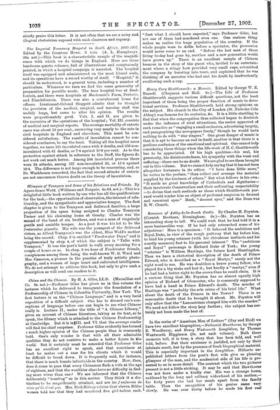The Imperial Yeomanry Hospstal in South Africa, 1900-1902. Edited by
the Countess Hews. 3 vols. (A. L. .Humphreys. 36s. net.)—This book is a characteristic sample of the magnifi- cence with which we do things in England. Here are three handsome quarto volumes, full of illustrations and sumptuously printed, in which a hospital campaign is narrated. The hospital itself was equipped and administered on the most liberal scale, and its operations have a record worthy of itself. "Hospital:' it should be understood, is a general term, including a number of particulars. Wherever we turn we find the same generosity of preparation for possible needs. The base hospital was at Deel- fontein, and there were hospitals at Mackenzie's Farm, Pretoria, and Elandsfontein. There was also a convalescent home for officers. Lieutenant-Colonel Sloggett admits that he thought the provision of the medical, surgical, and nursing staff was unduly large, but came to alter his opinion. The results were proportionately good. Vols. L and II. are given to the narrative of the operations of the hospital ; Vol. III. consists of medical and surgical reports. The average mortality of enteric cases was about 13 per cent., answering very nearly to the rate in civil hospitals in England and elsewhere. This must be con- sidered satisfactory. The results of inoculation cannot be con- sidered conclusive, to say the least. Taking all the hospital cases together, we have 121 inoculated cases with 9 deaths, and 556 non- inoculated with 61 deaths, or 74 against 10.9 per cent. As to the protection against attack in reference to the Staff, the figures do not work out much better. Among 244 inoculated persons there were 24 attacks, among 157 non-inoculated 23, or 11'4 against 164. The difference is not large enough to be reassuring, and, as Dr. Washbotum remarked, the fact that second attacks of enteric are not uncommon throws doubt on the theory of inoculation.






































 Previous page
Previous page